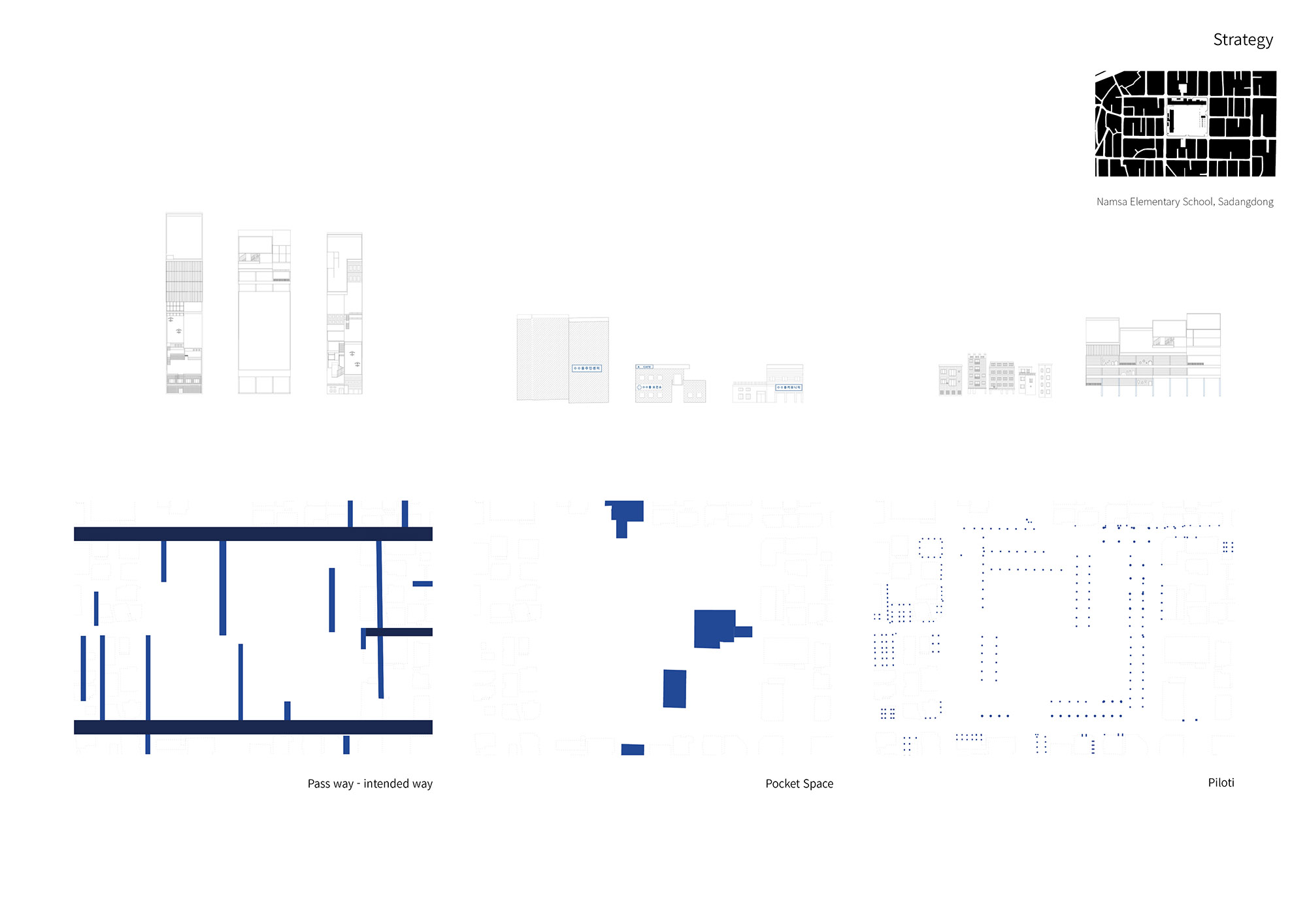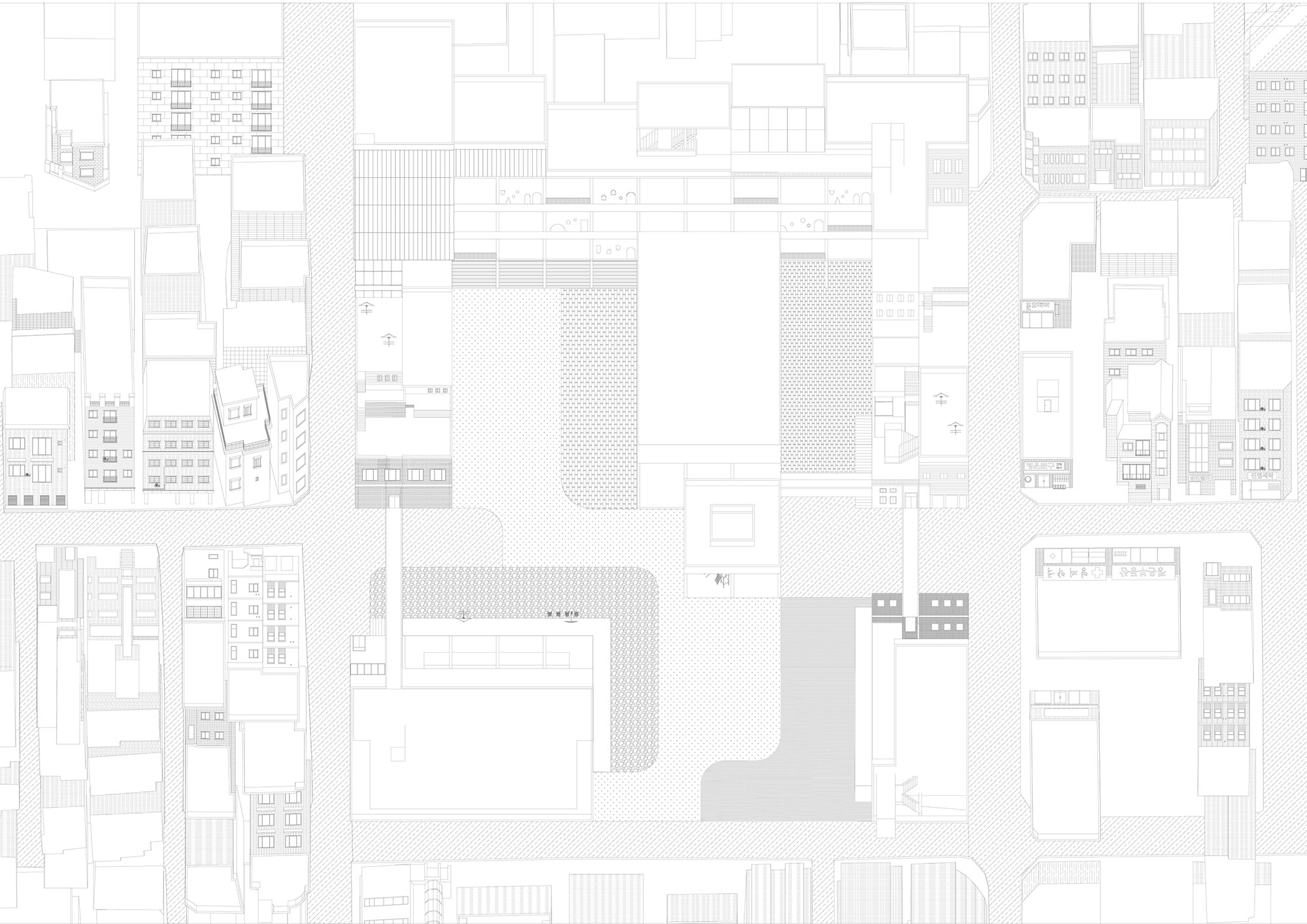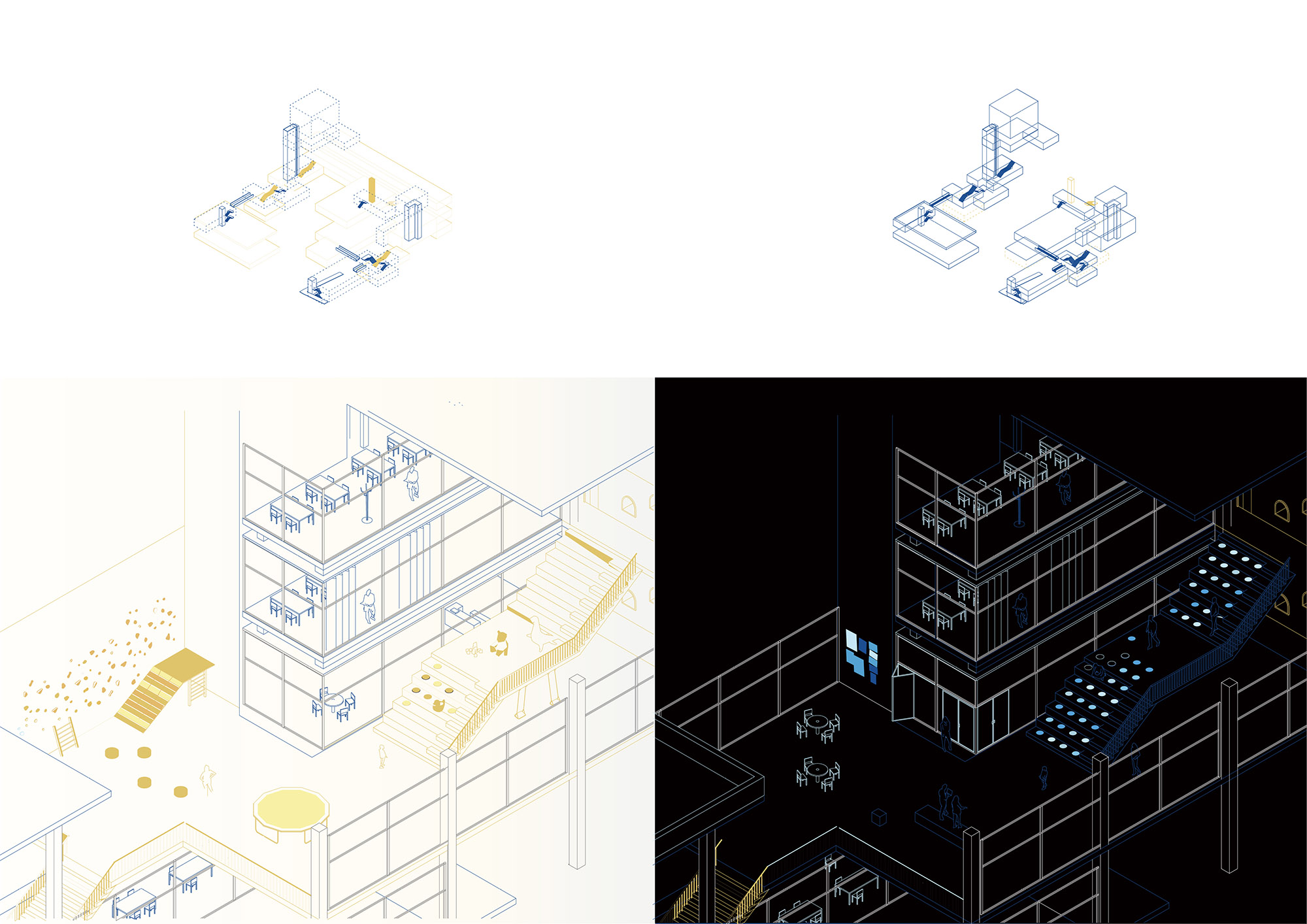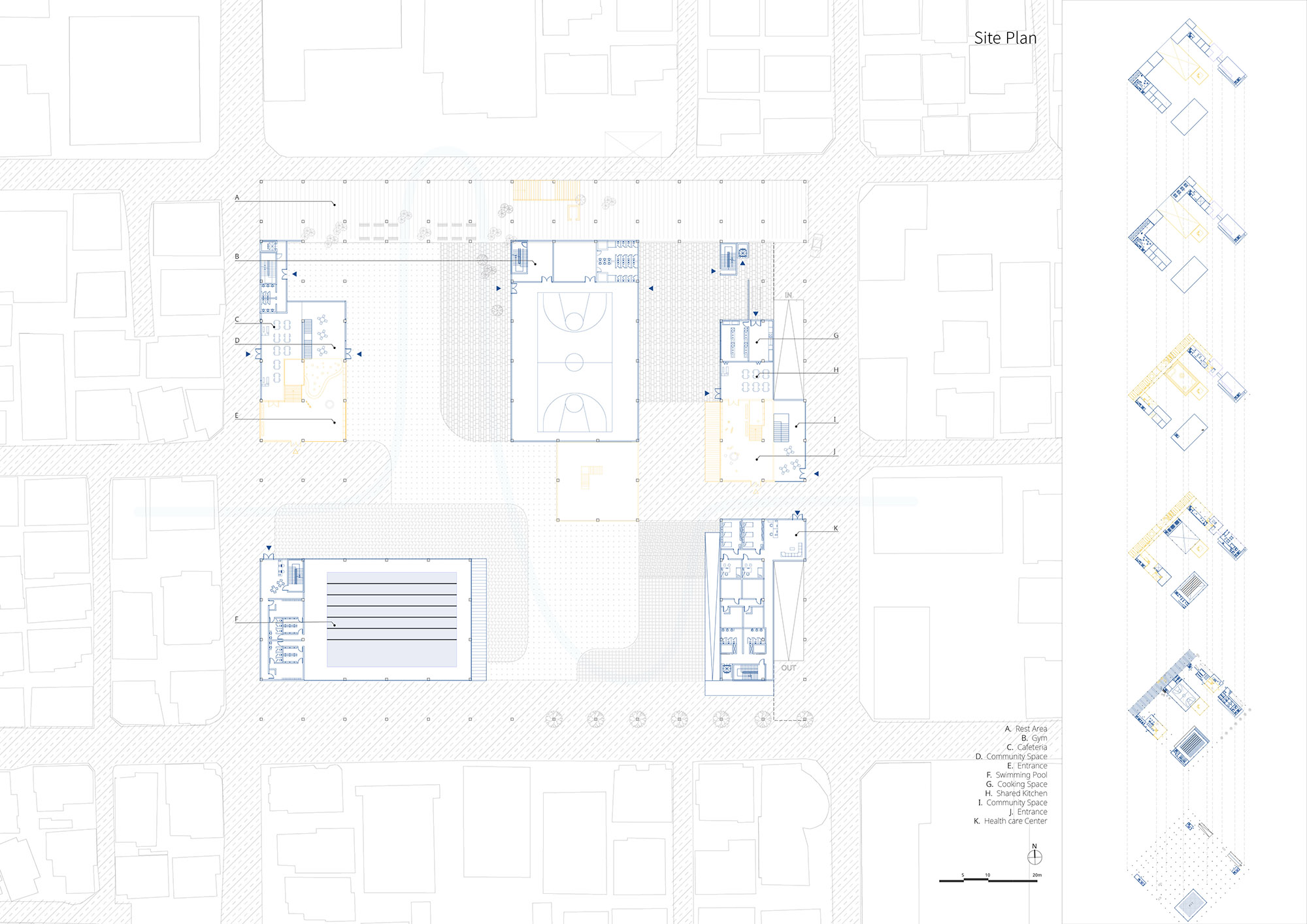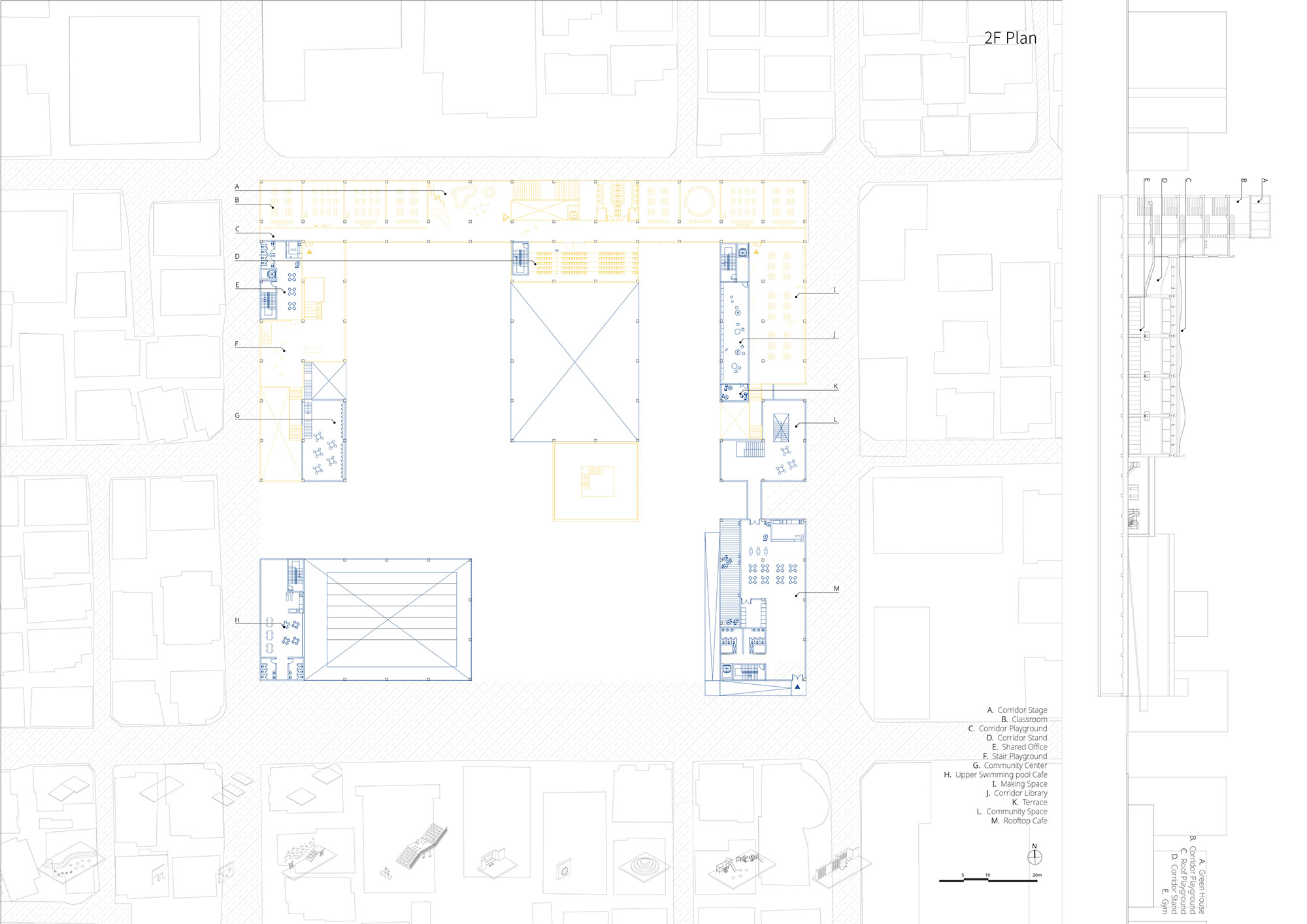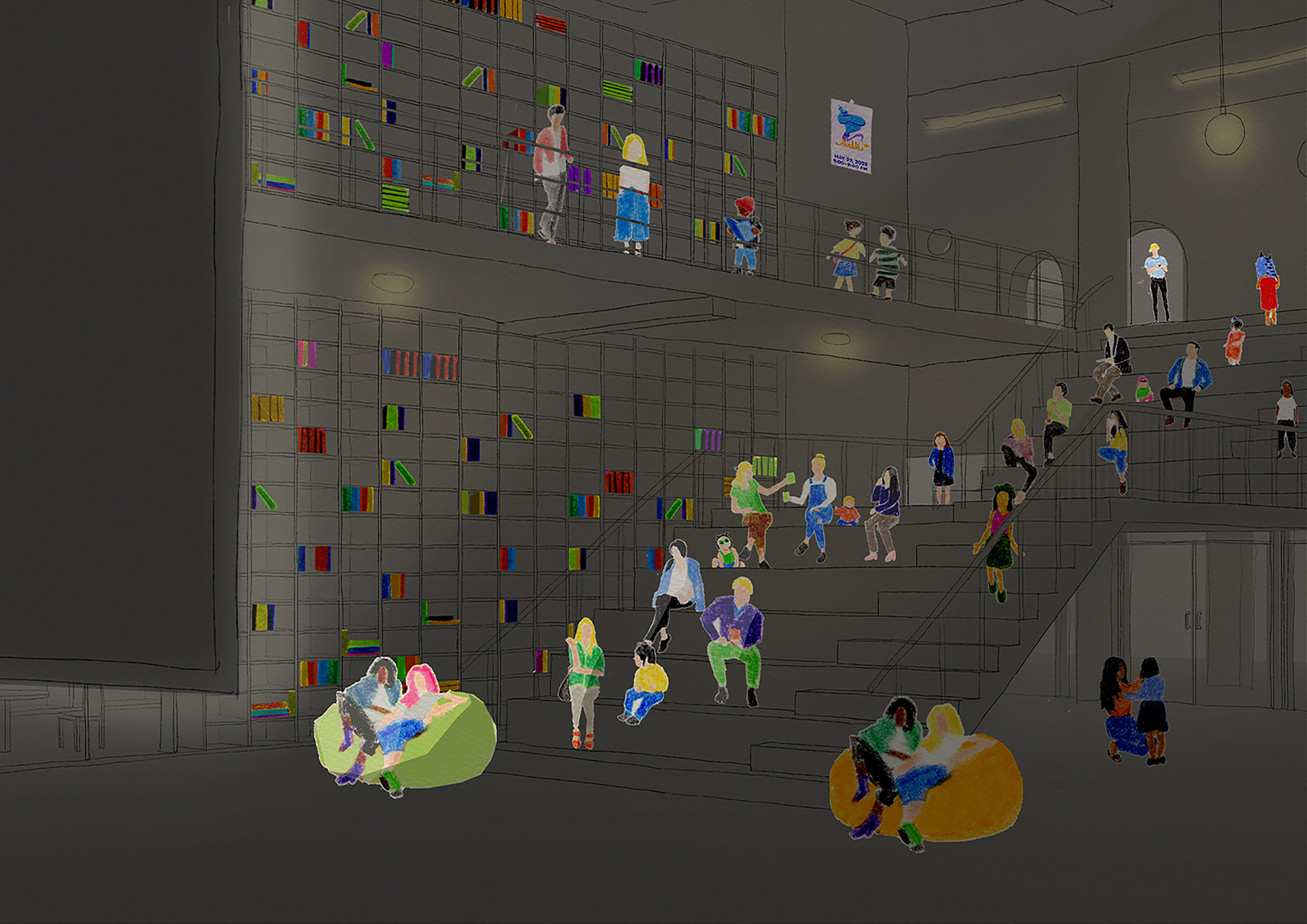
[우수상]
매개도시 : 운동장
근린주구 이론에 따라 서울 도시 내 가장 균질한 오픈스페이스인 운동장은 사실 닫힌 공간이다. 주민들은 제한된 시간에 제한된 형태로 이용하며, 초등학교 구성원 또한 마찬가지이다. 한편 일시적으로 영화상영회, 물놀이장, 음악감상회 등 다양한 이벤트를 갖는 운동장은 '오픈스페이스'가 될 잠재성을 갖고 있다. 한편 초등학교 내 학생 수는 감소하고 있으며 폐교를 하는 상황도 발생한다. 또 코로나사태로 인해 학교의 역할에 물음표를 던지는 현상을 비추어 봤을 때, 학교는 사회적 교류의 장으로 기능해야 할 것이며 운동장 또한 진정한 의미로 지역 커뮤니티의 장(場)이 될 필요성이 있다. 이 프로젝트는 운동장과 학교의 새로운 프로토타입을 제안하며, 예시로 사당동 저층주거지 일대의 사이트에 카탈로그를 조합한다. 학교의 프로그램들은 도시와 공유가능한 성격을 띄고 있으며, 특히 지면 레벨의 운동장 뿐만 아니라 계단-복도-옥상 운동장의 연속적인 바닥은 입체적인 도시가 되어 적극적으로 주변과 관계를 형성하며 도시와 영향을 주고받는다.
[2nd Prize]
Connected City : Playground
The most homogeneous openspace in the city is the playground according to the Neighborhood Unit. But it is actually a closed space. There's some concert, film screening, and swimming events, but these events occur limitely and temporarily. But It says the playground has the potential to become an 'openspace'. On the other hand, There is also a situation where the number of students is decrease, and the school close. If there is no school, it means that the school district will be expanded, which means that the community will be blurred. In addition, we have some questions about the role of the school due to the coronavirus. 'what is the fundamental role of the school? What should the school's role be?' If the school share the programs of the school and playground with the city, the whole city can be active while protecting the existing schools and playgrounds. This project proposes new prototypes for schools and playgrounds, and I designed an example which combines my catalogues on the site of a low-rise residential area in Sadang-dong, Seoul. In my suggestion, The playground becomes the city itself. In particular, The continuous floors of the playground will become a three dimensional city, actively forming realationships with the surroundings. That could cause changes in the city in the near future.



